Imperfections are inherent in all diamonds, ranging from visible flaws to more concealed blemishes. However, cloudy diamonds stand out as they appear lifeless and lackluster. This prompts the question: What causes diamonds to become cloudy?
Cloudiness in diamonds often stems from the presence of inclusions, although not all inclusions lead to cloudiness. You might wonder: What issues can these inclusions create? Is it something to be mindful of when purchasing a diamond?
In this article, we have comprehensively explored the reasons behind diamonds becoming cloudy, providing you with the necessary information. So, without further delay, let’s delve into the details.
DESIGN YOUR OWN ENGAGEMENT RING: START WITH A SETTING OR START WITH A DIAMOND. IT’S REALLY UP TO YOU!

What Does “Cloudy Diamond” Mean?
Cloudiness in a diamond is often caused by the presence of inclusions, which can create a hazy or dull appearance. Inclusions that are clustered together, especially in larger numbers, contribute to the cloudy effect. The exact cause of cloudiness can vary depending on the specific diamond, as the nature and extent of the inclusions play a significant role in determining its clarity.
This is particularly true for diamonds with lower clarity grades, as they tend to have a higher concentration of inclusions that can impact the diamond’s transparency.
Cloudiness is not solely attributed to cloud inclusions, which are composed of three or more crystal inclusions. Other types of inclusions, such as feathers and twinning wisps, can also contribute to a diamond’s hazy appearance.
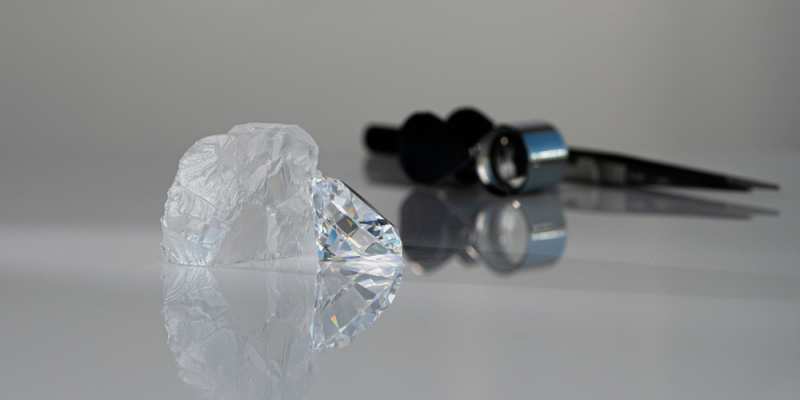
What Is A Feather Inclusion In A Diamond?
Feather inclusions refer to internal fractures within a diamond that resemble feathers. These inclusions can appear dark or white, similar to other types of inclusions. The impact of feather inclusions on a diamond’s appearance depends on their size and location.
Large Feathers:
When a diamond contains large feathers, it can have negative effects on both the diamond’s durability and its visual appeal. A significant feather can obstruct the path of colored and white light, diminishing the diamond’s fire and brilliance. Moreover, if a large feather is situated in the diamond’s girdle (the outer edge), it can make the diamond more susceptible to damage. The princess cut is particularly affected by large feather inclusions.
Small Feathers:
Small feathers, also referred to as hairline feathers, are shallow fractures that may resemble scratches at first glance. These feathers are typically harmless. Certification reports label them as “feathers” without distinguishing between small and large feathers. To assess the impact and size of the feathers, a personal inspection of the diamond is necessary.
Do Inclusions Affect Brilliance?
Yes, inclusions can impact a diamond’s brilliance, which refers to how well the diamond reflects white light back to the observer. When an inclusion obstructs the path of light, it may cause light to exit from the diamond’s bottom or sides, resulting in a dull and cloudy appearance.
While diamond clarity and color can influence brilliance to some extent, the most crucial factor is the diamond’s cut quality. The cut has a more significant impact on a diamond’s brilliance compared to clarity and color.
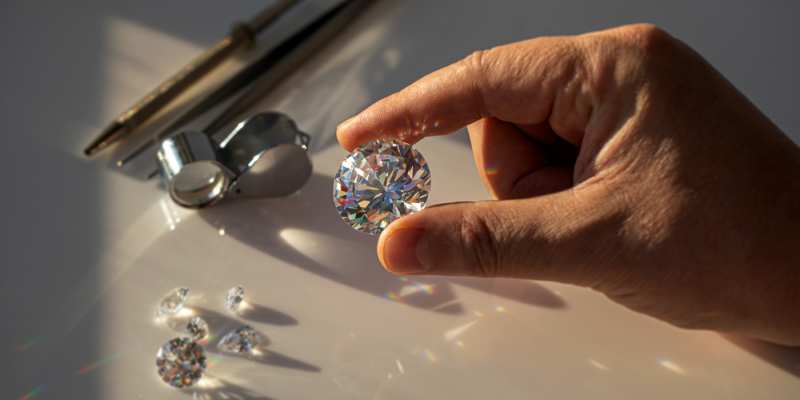
Lower Clarity Grades Diamonds
For diamonds that are less than one carat in size, the certificate provided by the GIA usually does not include a clarity plot. This means that you won’t have specific information about the size and location of any clouds or inclusions in the diamond.
To assess the clarity of such diamonds, you will need to visually inspect them yourself.
It is particularly important to be attentive if the diamonds have a clarity grade of SI1 or lower. If the certificate mentions that the clarity grade is based on clouds that are not shown, it indicates the presence of a significant cloud that covers a considerable portion of the diamond.
In such cases, there are typically multiple minor spots and small clouds throughout the diamond, contributing to the lower clarity grade. Individually, each inclusion may be small, but their cumulative effect results in a cloudy appearance for the diamond.
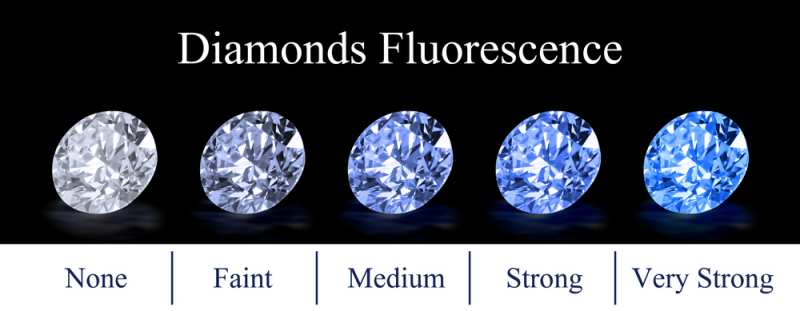
Diamonds With Fluorescence
Fluorescence can have both positive and negative effects on a diamond’s appearance. While it can enhance the color of a diamond, it can also cause a hazy or milky effect in some cases.
When evaluating diamonds, pay attention to the level of fluorescence. Diamonds with strong fluorescence in color grades D through I, and medium fluorescence in color grades D through G, often (but not always) exhibit a milky or hazy appearance.
It’s important to note that cloudiness caused by fluorescence may not be visible under store lights or on a screen.
If you are purchasing a diamond in person, make sure to examine it in daylight to assess its appearance. For online purchases, it is advisable to avoid fluorescence combinations that may increase the risk of a cloudy appearance.
Here are some key points to remember about diamond fluorescence and cloudiness:
- Faint blue fluorescence does not typically result in a cloudy appearance.
- Medium blue fluorescence rarely causes cloudiness.
- Strong and very strong blue fluorescence can often lead to a cloudy appearance.
Diamonds with strong or very strong blue fluorescence, especially in color grades D through I, are more likely to appear oily and hazy, affecting their transparency.
To ensure you are buying high-quality fluorescent diamonds, it is recommended to purchase from a reputable vendor. If you are shopping in person, you can ask the jeweler to show you the diamond under UV light in addition to daylight for a more comprehensive assessment.
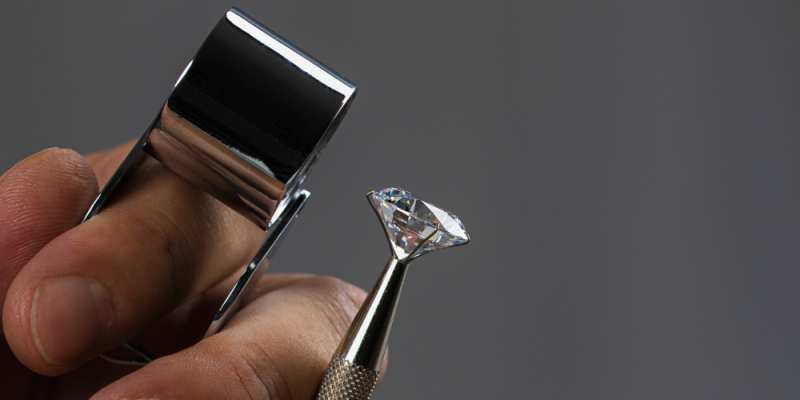
Are Cloudy Diamonds Bad?
The level of cloudiness in a diamond can vary, and it doesn’t always detract from its beauty.
If the cloudiness is not extensive and doesn’t cover a significant portion of the diamond, it can still be a stunning stone. Even if there are smaller clouds near the edges, they may not significantly diminish the diamond’s overall appeal.
Apart from inclusions causing cloudiness, cleanliness can also play a role in a diamond’s appearance. Normal wear can result in oils, residue from soap, and grime accumulating on the diamond, making it appear cloudy.
It is crucial to know how to clean a diamond ring to maintain its sparkle. If your diamond has lost its brilliance, it may be time for a thorough cleaning. You can clean it yourself, but scheduling an appointment with your jeweler will ensure a more comprehensive cleaning.
Learn More: Diamond Care: How To Take Care Of Your Diamonds
The choice of diamond ring setting can also affect the visibility of cloudiness. Certain settings can help conceal clouds or make them less noticeable. Let’s explore some popular ring settings:
- Prong setting
- Bezel setting
- Tension setting
- Channel setting
- The Tiffany setting
- Halo setting
- Bar setting
- Flush setting
- Cluster setting
- Three-stone setting
- Eternity band
The ring setting forms the foundation of your overall ring design. Selecting a setting depends largely on personal preference and style. Some settings are more suitable for individuals with an active lifestyle and those who work with their hands, while others feature elaborate designs with high-set gemstones.
Consider how frequently you will clean and maintain your ring, as some settings require more maintenance than others.
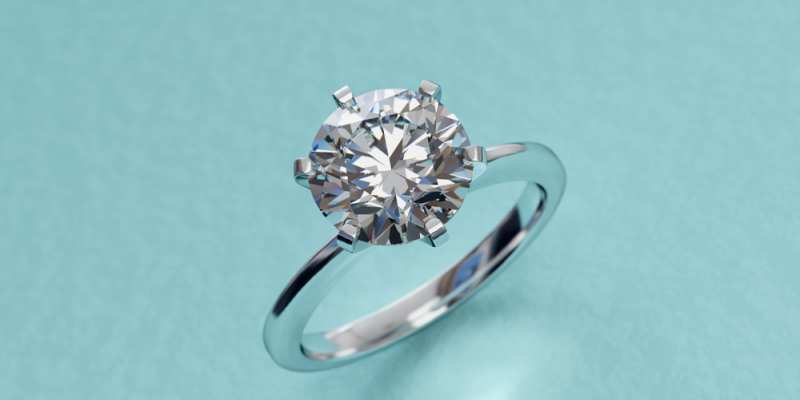
Cloudy Diamond Price
Cloudy diamonds are generally priced lower than diamonds without cloudiness. The reason for this is that clear diamonds tend to be more visually appealing, making them more valuable.
From our perspective, the lower price of a cloudy diamond may not be worth it. It is often better to find a diamond with a lower clarity grade that still appears transparent and free from visible inclusions. By choosing a lower clarity grade, you can save a significant amount of money compared to opting for a higher clarity grade.
What Are Eye-Clean Diamonds?
Eye-clean diamonds are diamonds that do not have any visible inclusions or blemishes when viewed with the naked eye. Although they may have imperfections when examined under magnification, they appear clean without the need for a jeweler’s loupe.
To determine if a diamond is eye-clean, it is advisable to view high-definition (HD) photographs or videos of the diamond. When purchasing from physical stores, it is recommended to observe the diamond away from the bright sales lights and ideally in natural daylight.
There is no specific clarity grade that guarantees an eye-clean diamond. For example, a VS2 clarity grade does not automatically guarantee that a diamond is eye-clean, although it often is. It is crucial to personally evaluate a diamond’s clarity, considering factors such as color, size, and number of inclusions, as they influence the visibility of imperfections at the eye level.
Can Cloudy Diamonds Be Fixed?
Unfortunately, if the cloudiness is caused by internal inclusions, there is no way to fix the diamond’s internal structure. However, if the diamond appears cloudy due to grime, oils, and residue, it can be cleaned to restore its clarity.
A clean diamond will always exhibit more brilliance and fire as light can reach the diamond and reflect off its table, enhancing its overall appearance.
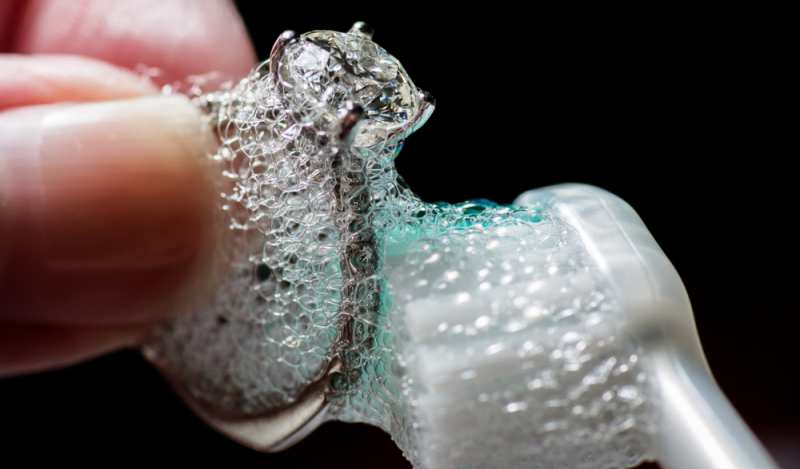
How To Keep Your Diamond Ring Shiny?
Taking care of your diamond ring is essential but not overly complicated. Daily wear can cause prongs to become loose or bent, potentially leading to gemstones falling out. To prevent this, ensure that the prongs securely hold your diamond in place. Many jewelers offer free prong checks, even if you didn’t purchase the ring from their store.
Dirt, residue, and oil can accumulate on your diamond, resulting in a dull appearance. Regular cleaning is necessary to maintain its shine. Even a thin film can affect how light reflects off the diamond. It’s recommended to clean your diamond ring several times a year to keep it looking its best.
You can have your diamond ring professionally cleaned at a jeweler’s, or you can easily clean it at home by following these steps:
- Fill a bowl with lukewarm water and add a drop of dish detergent. Stir the mixture gently.
- Place your diamond ring in the soapy water for approximately ten minutes to break down oils and grime.
- Remove the ring from the water and use a soft toothbrush to gently brush each side, paying attention to the edges and the back.
- Put the ring back in the bowl of soapy water and continue gently brushing to remove any loosened dirt.
- Rinse the ring under running clean water, ensuring that the drain is plugged.
- Dry the diamond ring using a lint-free cloth. Avoid air drying to prevent water stains on the diamond.
It’s important to note that using bleach or abrasive chemicals can damage your ring, so it’s best to avoid them during the cleaning process.
Additionally, it’s advisable to remove your ring during activities that involve heavy handwork, such as gardening, moving furniture, or lifting weights. This not only prolongs the lifespan of your diamond ring but also reduces the risk of losing it.
Keeping a ring dish near your kitchen sink is a practical tip. It allows you to remove your ring before washing dishes, protecting it from exposure to harsh chemicals and potential impact against hard surfaces.
Remember: the less wear and tear on your diamond ring, the better its condition will be over time.
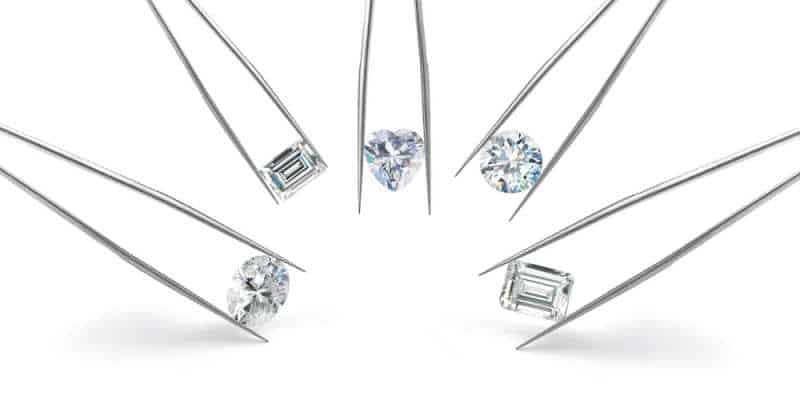
Conclusion
If you’ve noticed that your diamond appears cloudy and you’re curious about the reasons behind it, we’re here to provide an explanation:
Cloudiness in a diamond is often a result of inclusions, which are internal flaws that give the diamond a hazy appearance. When multiple small inclusions are present, the diamond can look dull and foggy.
However, inclusions are not the sole cause of a diamond’s cloudy appearance. Another common reason is the lack of regular cleaning. If your diamond hasn’t been cleaned in a while, it can accumulate dirt and grime, leading to a hazy and dull look. In such cases, you can either take your diamond to a jeweler for professional cleaning or clean it yourself at home.
Ultimately, it’s advisable to avoid diamonds that are noticeably cloudy when purchasing one, as this diminishes their brilliance and sparkle. Instead, aim for diamonds that are eye-clean and have a transparent appearance, ensuring they showcase their beauty to the fullest extent.


